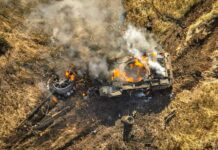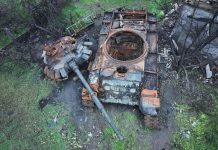Establishing a beachhead is the defining component of an amphibious assault. Fail, and the following forces may have to find an alternate landing site or fight their way onto shore. Succeed and it is possible to achieve surprise at scale, which has been identified as an important component of military success.[1]
The impact a successful amphibious assault can achieve was demonstrated on D-Day, of course, but also at the Battle of Inchon in the Korean War.[2] Amphibious armour can play a useful role in establishing and securing a beachhead; they can carry firepower to support an assault, as China’s ZTD-05 does with its 105 mm gun, and provide armour to increase survivability of assaulting infantry like the Assault Amphibious Vehicle (AAV)-7. However, amphibious armour carries additional compromises on top of those inherent in conventional armoured fighting vehicle (AFV) design. This piece will examine the design of amphibious armoured vehicles, and how they are developing to meet the evolving battlespace.
Defining amphibious AFVs
For the purposes of this article, an amphibious AFV is regarded as a vehicle with a ship-to-shore capability. It may not always be used, but it essentially requires an AFV that is not just able to float, but float for many hours and navigate open ocean, surf and potentially challenging terrain upon reaching the shore. This typically means that it can be launched from a larger vessel such as the US Navy’s America class or Turkey’s Landing Helicopter Dock (LHD) TCG Anadolu. Generally speaking; amphibious operations are enabler-intensive; they require a lot of firepower, valuable vessels coming within very close proximity to land, and many specialised platforms with restricted utility in other scenarios. This may be the reason that they are a relatively rare commodity amongst the world’s AFVs.
Historically, the AAV7 and its variants represent arguably the most successful design, with 12 users and more than 1,000 vehicles sold. However, more modern designs have emerged since, including the ACV from Iveco and BAE Systems, which is due to replace the AAV7 in USMC service, China’s Norinco ZBD-05 family, which has been exported as the VN16 to Thailand and Venezuela, and the Zaha – a domestic design from Turkey’s FNSS.
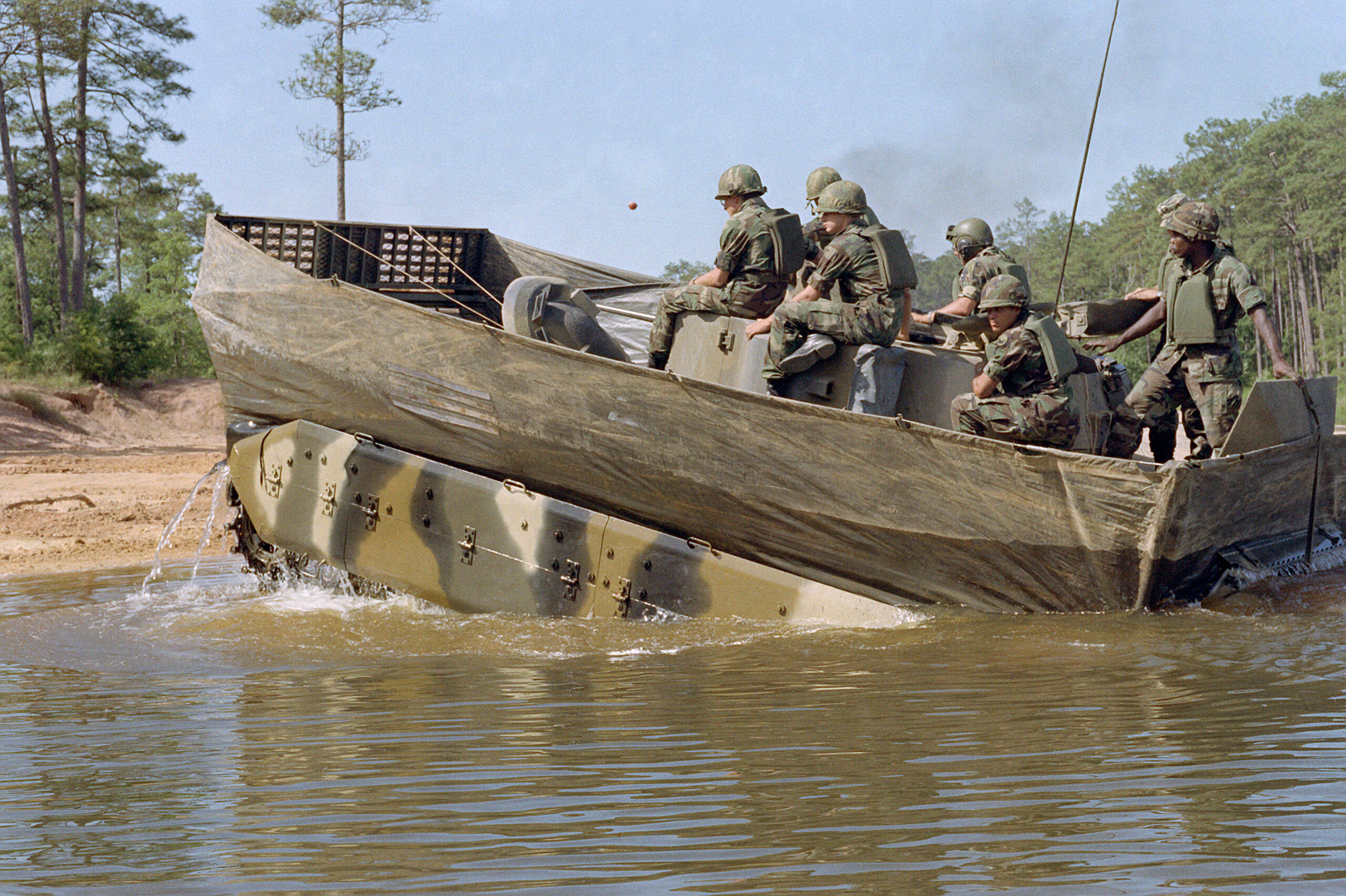
Credit: US DoD
The above definition excludes vehicles that are technically amphibious such as the BMP-2. The BMP-2, as originally envisaged, could raise a trim vane at the front of its hull and navigate bodies of water using its tracks for propulsion at a speed of 7 km/h. However, it is primarily designed to use this capability to cross inland bodies of water and is less capable of conducting a ship-to-shore operation. Its low speed can lead to challenges in fast-flowing rivers, however, its ability to cross a river with relatively little preparation, theoretically enables a Russian motorised rifle formation to quickly seize a bridgehead on the opposite side of a river using its BMP-2s and prepare for its tanks to join after snorkelling across on the riverbed.[3] Many other Cold War era vehicles had similar capabilities, the original M113 is one example and even the M2 Bradley was technically amphibious at the beginning, however, subsequent up-armouring has effectively removed this capability.[4] In any case, these kinds of vehicles are not well suited for the kind of ship-to-shore operations considered here.
Building amphibious fighting vehicles
Amphibious vehicles tread an awkward line in AFV design. Where standard AFVs must balance mobility, firepower, and lethality, an amphibious AFV must balance all of this with the often-contradictory challenges of having to float and steer in water. The design characteristics that make a vehicle perform well on land; a vehicle length-to-track centre ratio of ~1.6, a sloped glacis, and others, are not correlated with good performance at sea.[5] An amphibious vehicle must be watertight and be able to transition from a ship’s well deck to the sea without sinking. This requires a buoyancy reserve of at least 25% of the vehicle’s weight. Ideally, an amphibious vehicle will also be able to self-recover if it rolls 100°, a non-amphibious but water capable vehicle for comparison, should be able to pitch or roll between 5° and 15° without flooding its engine.[6] An amphibious vehicle also needs to be able to turn quickly within its own length and navigate a ‘plunging surf’ with waves up to 3.6 m.
The vehicle should also have two propulsion systems: its tracks or wheels for operation on land, and a system for propulsion at sea. The design also needs to minimise drag in the water, but external appendages such as wheels and tracks add a lot of drag. Some vehicles are propelled by their wheels or tracks, which produces a relatively slow water speed that can be estimated by . Put more simply, it is rare for a vehicle using its wheels or tracks to exceed 10 km/h at sea. True amphibious vehicles typically employ water jets or propellers for propulsion and aim to exceed this by some margin. The former method takes up additional space inside the vehicle, the latter adds drag to the outside. However, water jets generally provide greater speed and manoeuvrability at sea.[7]
The requirements for amphibious AFVs are therefore complicated to a further degree than conventional AFVs. Consider, for example, the impact of protection requirements on an amphibious vehicle. The greater the protection, the greater the vehicle weight. This naturally equates to the requirement for additional automotive performance as it would on land; however, it may also increase vehicle size as the total volume must increase to maintain buoyancy. This in turn will impact manoeuvrability at sea and on land.
Modern amphibious contenders

Credit: FNSS
Turkey revealed the Zaha amphibious assault vehicle at IDEF in 2019 after signing a contract with the Turkish Ministry of Defence in 2017. Turkey has procured 27 Zahas, 23 of them in the APC role, two as command vehicles and two as recovery vehicles. It has a top speed on land of 70 km/h and can reach 12 km/h at sea. The vehicle provides room for 18 dismounts and three crew, all provided with blast and ballistic protection.[8] The base structure of the hull is built from 5000 series aluminium alloys selected for their corrosion resistance and ease of welding. Ceramic armour is fitted over the top of the aluminium to provide ballistic protection. The aluminium in the bottom of the hull is fitted with supports and thickened for blast resistance. It has a 30% buoyancy reserve and can travel at 12 km/h in Sea State 2. It is capable of travelling in Sea State 4 (1.25 to 2.5 metre waves) with the addition of a special kit.
FNSS also manufactures the Kunduz armoured amphibious bulldozer, which requires a crew of two and uses an aluminium hull to provide weight-efficient blast and ballistic protection as well as the necessary buoyancy reserve. The 19 tonne vehicle can travel at 8 km/h on water using two waterjets or 45 km/h on land, and it uses a fixed dozer blade (which relies on the vehicle’s hydro-pneumatic suspension system for elevation and depression), to provide earth-moving capabilities.[9] Both vehicles are used by the Turkish armed forces and reflect the importance placed upon amphibious capabilities by Turkey. The Zaha was developed to provide the Turkish armed forces with an amphibious capability to launch from the TCG Anadolu LHD. The Anadolu is expected to carry uncrewed aerial vehicles (UAVs) as well as more conventional fixed- and rotary-wing systems. Alongside 27 Zahas, it will also have room for 13 tanks.[10] Overall, it will represent potent vessel in terms of capability, providing that it can be protected from the anti-ship cruise missiles that have spread throughout the Middle East.
The AAV7 is probably the best-known amphibious AFV. It has been through multiple upgrades and modifications and deployed operationally to Afghanistan. However, the USMC is seeking is replacement in the wheeled 8×8 ACV. The ACV is manufactured and developed by BAE Systems and is based on Iveco Defence Vehicles’ SuperAV design. It reached its initial operating capability in 2020 and more than 200 had been delivered in an APC configuration by March 2023.[11] The vehicle is being developed into several variants; the ACV-P is the standard APC, the ACV-30 will carry a Kongsberg RT20 turret armed with a 30 mm cannon.[12] There is also the ACV-C command variant, a recovery variant and plans for a reconnaissance variant.
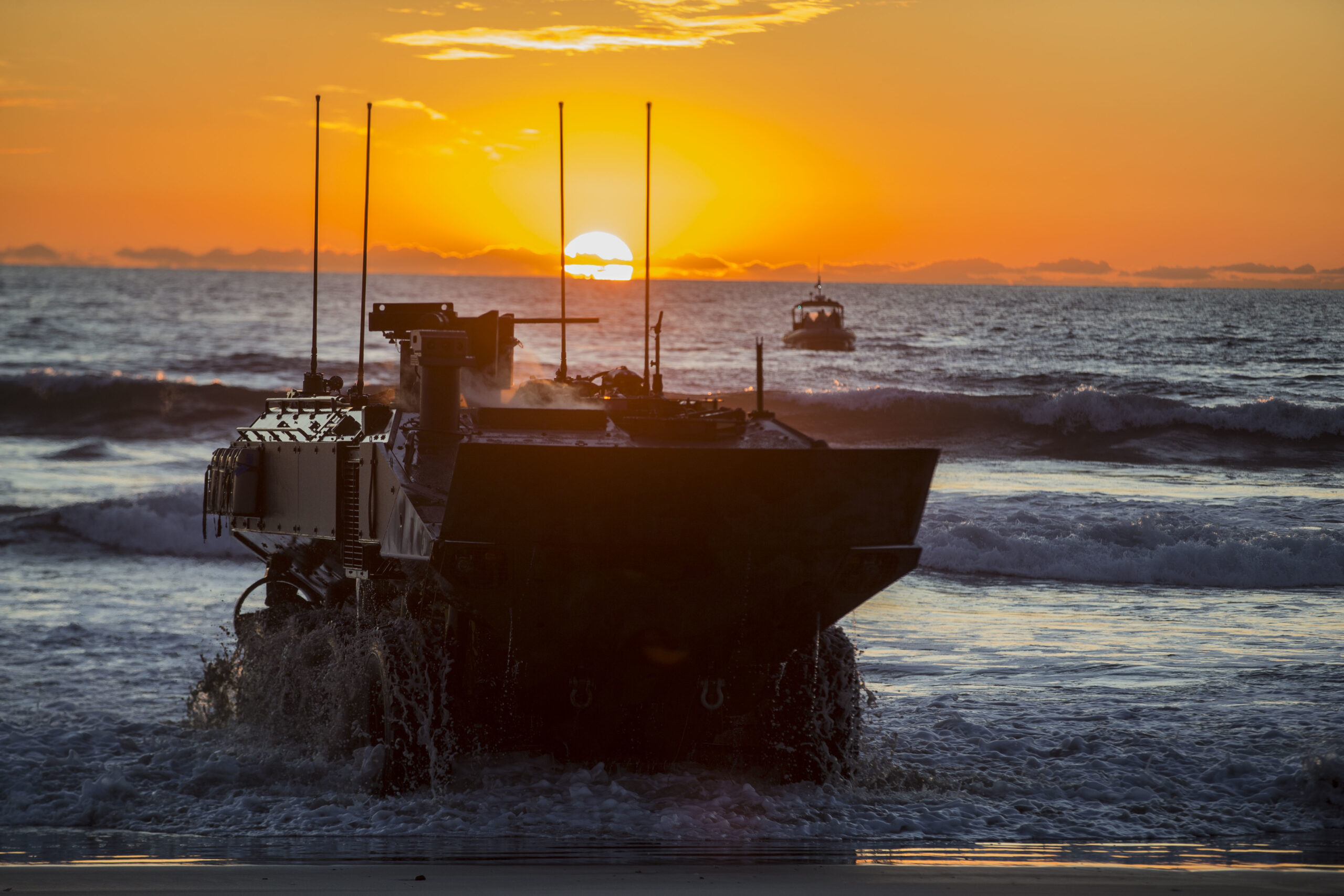
Credit: USMC/Lance Cpl Andrew Cortez
The ACV is a 32 tonne vehicle with space for three crew and 13 dismounts. It can travel 19 km on open ocean at speeds greater than 11 km/h, with a 400 km range once ashore. The vehicles are designed for ship-to-shore operations and are provided with blast protection that is close to that of a mine-resistant, ambush protected (MRAP) type vehicle, as well as protection against ballistic threats.[13] As the vehicles are still relatively young for an armoured vehicle family, they are still exhibiting teething problems. Some were found to roll in surf heights that exceeded 1.3 meters in 2022.[14] The ACV-C has been found to lack sufficient beyond line-of-sight (BLOS) radio capacity to command battalion or regimental operations on the move. At the moment, crew must stop the vehicle and set up additional antennas to achieve this.[15] Initial testing also found that the vehicles were struggling to meet their required mean time between operational failures, although this was primarily attributed to the remote weapon station.[16]
Furthermore, the ACV has been used as the test bed for two futuristic trials. In February 2023, BAE tested the Stalker and Indago small uncrewed aerial vehicles (UAVs) on an ACV-Command, Control, Communication and Computers, Uncrewed Aerial Systems (ACV-C4UAS) variant.[17] The UAVs were provided by Lockheed Martin’s Skunkworks to conduct long-range reconnaissance. Later that year, the ACV-C4UAS variant was used in a manned-unmanned teaming (MUM-T) trial, where it worked alongside the Rex MK II Unmanned Infantry Combat Support System from Elta.[18] The Rex MK II can perform several roles including ISR, logistics support and it can carry weapons. It is not clear what capacity it was used in during this demonstration. However, it is clear that MUM-T is an area of importance for amphibious vehicles, as shown by other amphibious vehicle programmes.
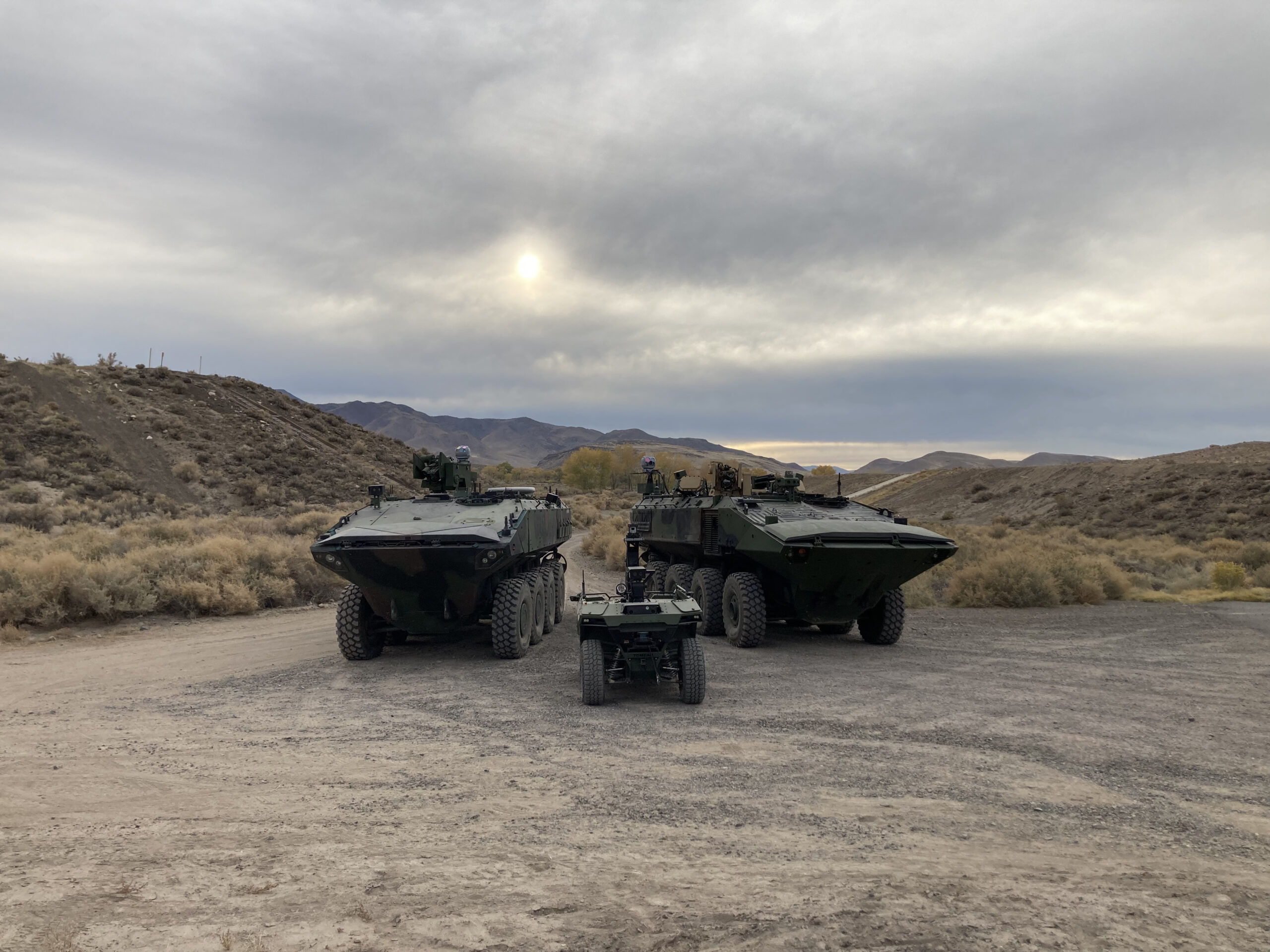
Credit: BAE Systems
Japan, for example is developing a tracked amphibious vehicle under a project called Future Amphibious Technology Research (FAT-R) in cooperation with the US. Japan is home to more than 200 islands, many of them surrounded by extensive coral reefs. In the event of an opponent seizing those islands, Japan expects to use amphibious forces to rapidly retake them. The FAT-R is designed around completing this mission, and to that end is powered by a 3,000 hp engine with rubber tracks, and a transmission that can generate an “upward driving force”. This “upward driving force”, combined with the thrust of the waterjets enables the vehicle to climb a 50° slope on a coral reef, and onto its surface, even in shallow waters. Japan has also explored the option of remotely operating the vehicle so that MUM-T can be used to reduce casualties during those operations should they ever occur.
China has also taken a comprehensive approach to its amphibious capabilities and developed the ZBD-05 family of tracked AFVs. The base variant is the ZBD-05 armed with a 30 mm automatic cannon and an externally mounted Red Arrow-73 series ATGM. It provides room for 11 dismounts and requires a crew of three. Notably, the family also includes the ZTD-05, an amphibious variant armed with a 105 mm main gun, and another that can launch a fixed wing reconnaissance drone whilst at sea. All variants are also capable of firing whilst at sea, and this is routinely demonstrated by the PLA in well-oiled training videos. The vehicle is fitted with a bow blade at the front, and a flat blade at the rear, both of which that are extended for swimming and work to create a hydroplaning effect, according to the PLA. As it enters the water, the suspension raises the roadwheels and tracks to reduce drag, and the engine’s hp is increased to 1,500, resulting in a reported top swim speed of 25 km/h. Firepower is a critical component for amphibious vehicles – they must be able to win a firefight upon reaching the shore, and this is where doctrine becomes important.
Fighting with amphibious vehicles
US doctrine states that there are many reasons to conduct amphibious operations, and that many of them are far different from the archetypal image of a D-day style landing with waves of infantry borne ashore in landing craft. Within this operational category, amphibious vehicles can play a variety of important roles, regardless of the operation type. They might deter an aggressor during an evacuation, for example, or provide a rapid manoeuvre option to outflank an opponent from an unexpected direction and turn the tide of a war.
In the US context, amphibious operations are conducted by an Amphibious Force, which consists of an Amphibious Task Force (ATF) and a Landing Force. An ATF may consist of various assets from the US Navy, Military Sea Lift Command, and Maritime Administration assets.[19] The Landing Force is provided by the USMC or US Army. They operate together to conduct ship-to-shore operations, potentially from over the horizon. It observes that the sea offers a large manoeuvre space for amphibious operations, and that the ATF commander should seek to maximise the use and effects of electronic warfare, deception, firepower, and developments in command and control to achieve surprise or advantage. It also states that the preferrable tactic against heavily defended positions is to bypass them, which of course requires manoeuvre at sea and excellent situational awareness.
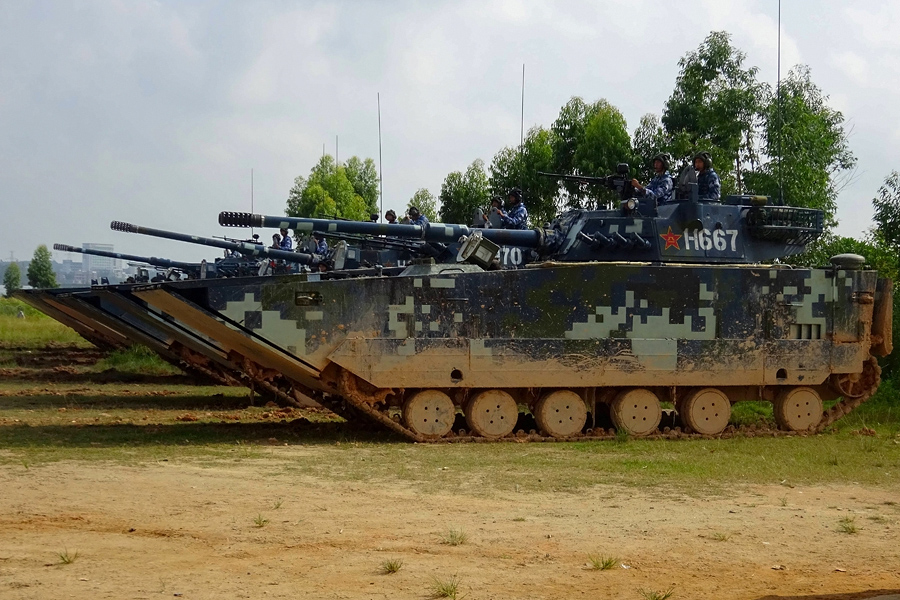
Credit: Russian MoD
If an enemy position cannot be bypassed, the ATF will have to engage it from the sea using precision strike assets delivered from the sea and air. It is clear that the process of building and deploying an Amphibious Force as well as building combat power ashore leads to multiple complexities and points of vulnerability. This requires the effective coordination of all arms of the military if it is to be successful. Firepower plays an important role, especially in a world where anti-ship cruise missiles (ASCMs) have proliferated so widely, potentially holding amphibious task forces at risk, whilst anti-tank guided missiles (ATGMs) will likely present a threat to amphibious vehicles as soon as they come within range. Furthermore, the quantity of amphibious vehicles deployed by most nations is much smaller than those used in the past. So, it stands to reason that the risk of an amphibious force suffering catastrophic losses – given the greater accuracy of modern weapons, and the lower number of vehicles that can be deployed – is perhaps higher than ever before.
Once ashore, amphibious vehicles must maintain excellent mobility to widen a beachhead and drive the opposing forces away from the next wave of troops that will inevitably follow. This combination of mobility and lethality is important for all vehicles, but an amphibious platform can expect to find sand both wet and dry, shingle, clay, and many other substances that are challenging for armoured vehicles. With exceptions such as ZTD-05, most will rely on their dismounts to supplement their on-board firepower, as well as very close cooperation with supporting arms to defeat well-emplaced and protected opponents. It should therefore go without saying, that amphibious operations are also inherently combined arms operations, and they should not be expected to succeed without combined arms coordination.
In sum
Every vehicle covered in this article is capable of, or in future practice likely to perform with some form of MUM-T. While it is generally true that land platforms are moving in this direction, it is likely that amphibious platform users will develop unique MUM-T use cases in establishing and securing beachheads. Beyond this, the design constraints imposed on armoured vehicles by physics are apparent. None of the designs here are radically new in terms of their capabilities, and all must take account of and balance, wave height, terramechanics, and likely threats within their design. Finally, in any operation, amphibious vehicles will require extensive combined arms support. Regardless of the scale of MUM-T that occurs, they will require close air support, air defence, and naval gunfire throughout an opponent’s depth to be successful in many situations. In this regard, the nature of securing a beachhead is not all that different from 1944. Overall, perhaps it is the case that while the platforms securing a beachhead may change, the nature of operations required to do so successfully will not. As such, a country’s ability to deliver in this regard matters most.
Sam Cranny-Evans
[1] Jim Storr, Battlegroup!: The Lessons of the Unfought Battles of the Cold War (Helion & Company, 2021)
[2] Inch’ŏn landing | Korean War, MacArthur’s Plan, U.S. Victory | Britannica
[4] IFV M2 Bradley (50megs.com)
[5] A review on drag reduction technology: Focusing on amphibious vehicles – ScienceDirect
[6] Implementing Tracked Vehicle Mobility Specifications on JSTOR
[7] Comparison of waterjet performance in tracked vehicles by impeller diameter – ScienceDirect
[8] FNSS – MAV Marine Assault Vehicle
[9] FNSS – AACE ARMOURED AMPHIBIOUS COMBAT EARTHMOVER Technical Specifications
[10] Turkish Navy welcomes its new flagship, TCG ANADOLU – Naval News
[11] U.S. Marine Corps orders more Amphibious Combat Vehicles from BAE Systems | BAE Systems
[12] protector-rt20.pdf (kongsberg.com)
[15] Amphibious Combat Vehicle – Command and Control Variant (ACV-C) (osd.mil)
[16] Microsoft Word – Section Dividers.doc (osd.mil)
[17] BAE Systems successfully tests Lockheed Martin Skunk Works®’ small unmanned aerial systems on ACV C4/UAS | BAE Systems
[18] BAE Systems and ELTA Systems, Ltd. successfully test manned-unmanned teaming requirements on Amphibious Combat Vehicle | BAE Systems
[19] JP 3-02, Amphibious Operations, 4 January 2019 (jcs.mil)



